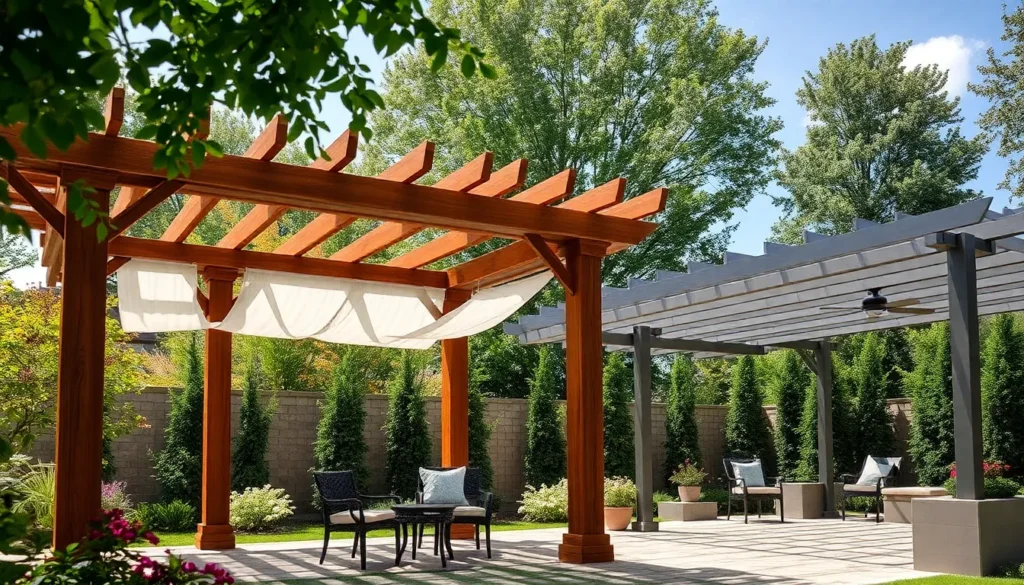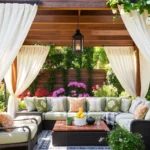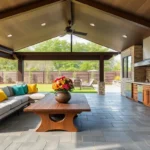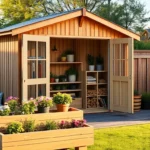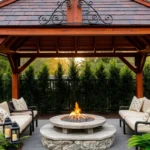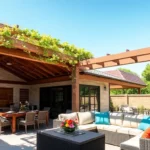Imagine stepping into your backyard oasis, where a stunning pergola not only provides a stylish retreat but also stands strong against the elements. Whether you’re a beginner just dipping your toes into outdoor design or a seasoned homeowner looking to elevate your space, the right pergola material can make all the difference. Our guide on the “10 Best Pergola Materials for Durability and Style” is here to inspire and inform, ensuring your outdoor area becomes a true extension of your home.
In this exciting journey, we unveil the secrets to choosing materials that blend both beauty and resilience. With our expert insights, you’ll gain the confidence to pick the perfect pergola that suits your style and withstands time’s test. Prepare to transform your outdoor haven into a beautiful, long-lasting retreat that welcomes gatherings, relaxation, and endless enjoyment.
Rustic Charm Pergola (Reclaimed Barn Wood)
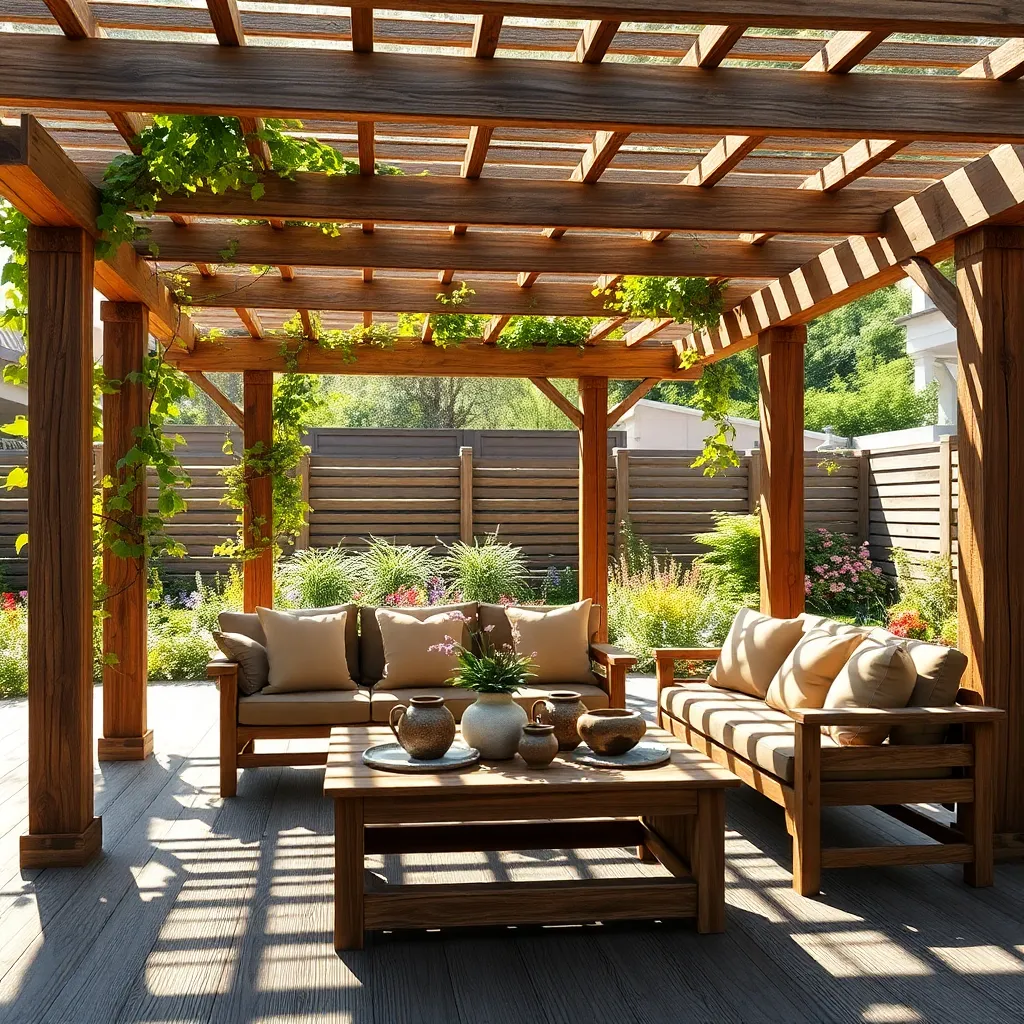
Using reclaimed barn wood for your pergola not only adds a touch of rustic charm but also embraces sustainability. This choice of material offers a weathered look that blends seamlessly with natural surroundings, providing a unique character to your outdoor space. To ensure durability, select barn wood that is free from rot and pests, and consider treating it with a protective sealant to withstand various weather conditions.
Designing a pergola with reclaimed wood allows for creativity, as each piece may vary in size and texture. For a basic setup, aim for a pergola that is approximately 10 feet by 10 feet, with beams spaced around 18 inches apart for adequate shade. Advanced builders can incorporate additional features like climbing plants or string lights to enhance the visual appeal and functionality. Always use corrosion-resistant screws and brackets to ensure stability and longevity of your structure.
Minimalist Elegance (Aluminum Frame)
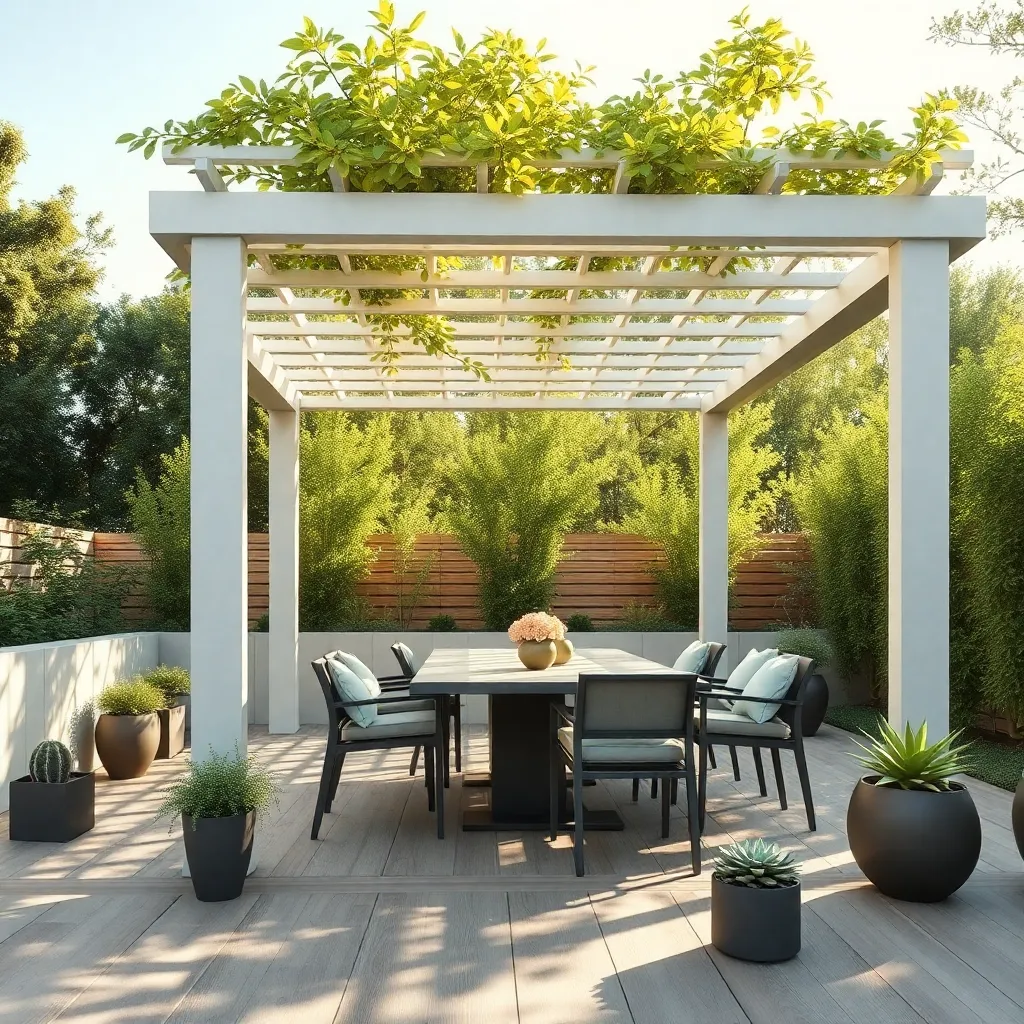
For those seeking minimalist elegance in their outdoor space, an aluminum frame pergola is an ideal choice. Known for its sleek design and durability, aluminum offers a lightweight yet sturdy structure that is resistant to rust and corrosion, making it perfect for various climates. When designing your aluminum pergola, consider pairing it with a retractable canopy for adjustable shade, allowing for dynamic use of your space whether under full sun or partial cover.
Installation is straightforward, as aluminum frames often come in pre-fabricated kits that are easy to assemble. Beginners will appreciate the simplicity, while more experienced builders might explore custom designs by combining aluminum with other materials like glass or wood for added texture. For optimal stability, ensure your pergola posts are anchored securely into concrete footings. This not only provides a solid foundation but also enhances the structure’s resilience against wind and weather.
Tropical Vibe (Bamboo Construction)

For a distinct tropical vibe, constructing a pergola with bamboo can transform your outdoor space into a serene retreat. Bamboo is not only sustainable but also highly durable, making it an excellent choice for a pergola that needs to withstand the elements. To start, select thick, mature bamboo poles—ideally with diameters of 3 to 4 inches—to ensure stability. Bamboo’s natural flexibility allows it to withstand wind and rain, adding both beauty and resilience to your garden.
When designing your bamboo pergola, consider incorporating decorative elements like woven bamboo panels or lattice work to enhance the tropical aesthetic. For a beginner-friendly approach, use natural jute or hemp rope to securely bind the poles at the joints, offering both function and style. Advanced builders might explore bamboo joinery techniques such as fish-mouth joints for a seamless look. To protect the bamboo from moisture and pests, apply a clear outdoor sealant, ensuring your pergola remains a stunning focal point for years to come.
Modern Glass Roof Pergola (Tempered Glass Panels)
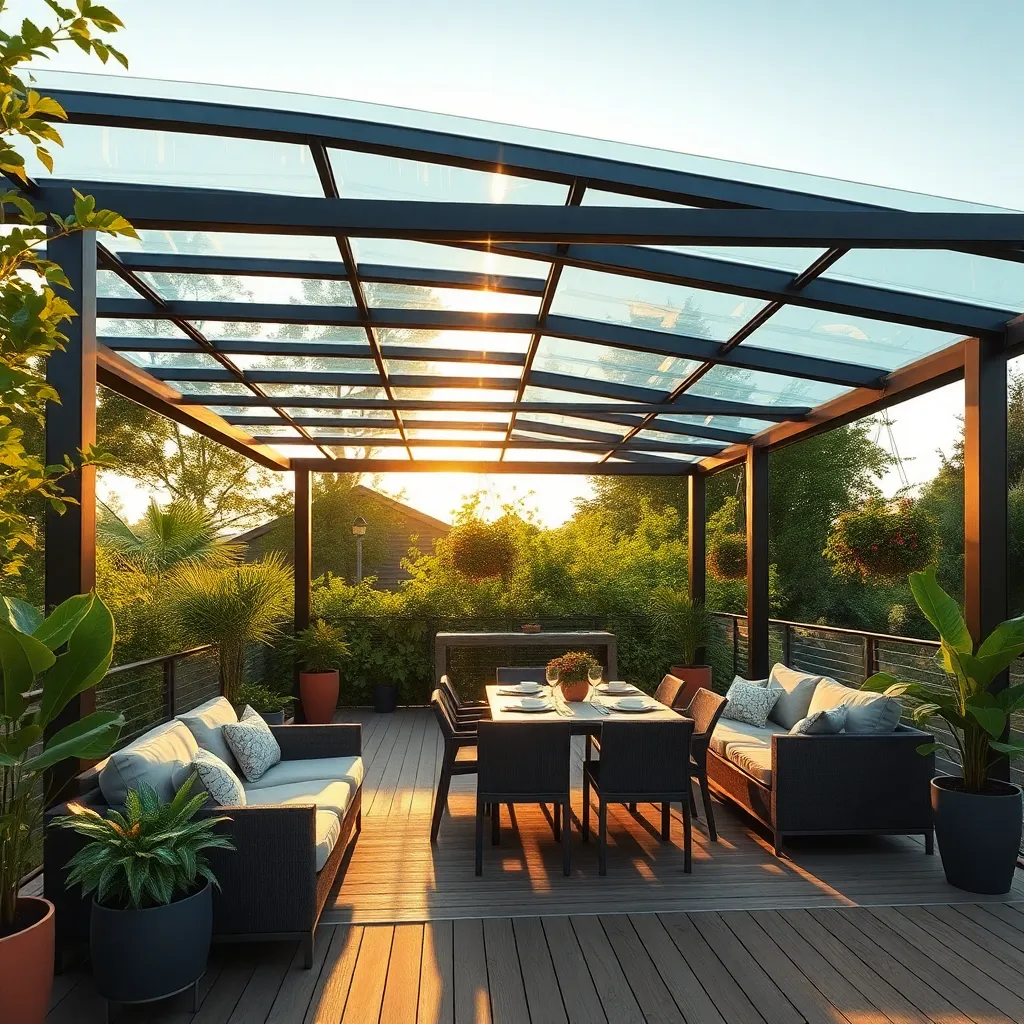
Incorporating a modern glass roof pergola into your outdoor space can create a stunning visual impact while providing protection from the elements. Using tempered glass panels ensures durability and safety, as these panels are designed to withstand harsh weather conditions and resist shattering. For a sleek and minimalist design, consider using aluminum or steel frames, which offer both strength and elegance. Beginners will appreciate that tempered glass requires minimal maintenance—just periodic cleaning to keep it looking pristine.
For those looking to personalize their pergola, consider adding integrated lighting within the frame to create a cozy ambiance during evening gatherings. Advanced gardeners might explore incorporating retractable blinds beneath the panels for adjustable shading. When planning your pergola, ensure the structure is securely anchored and properly sloped to allow for efficient water runoff. By choosing the right materials and design elements, you can enjoy a stylish and functional outdoor space that enhances your home’s aesthetic appeal.
Mediterranean Style (Stucco and Tile)
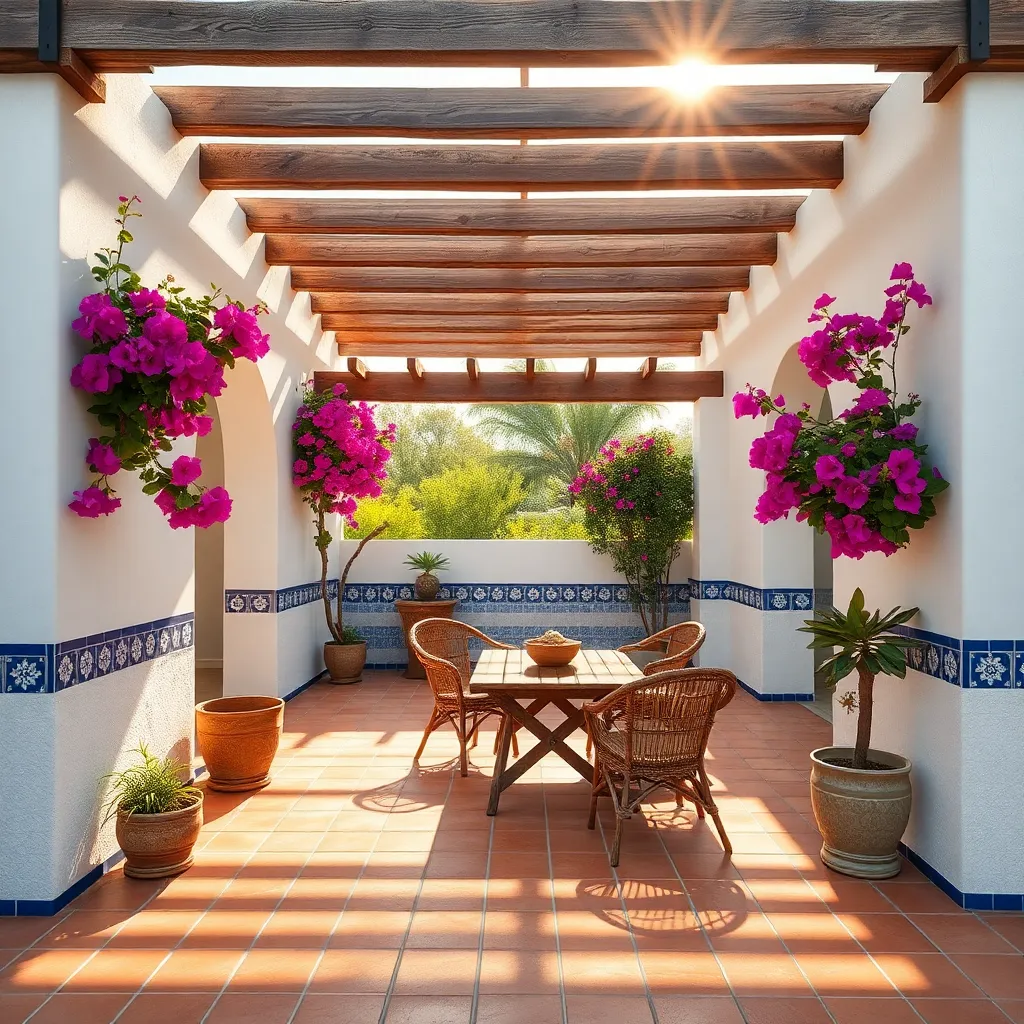
For a touch of the Mediterranean in your backyard, consider using stucco and tile to create a pergola that exudes warmth and charm. Stucco, known for its durability, can be applied over a sturdy wood or metal frame to create a smooth, weather-resistant finish. Opt for a light, earthy color palette that reflects the sun and blends seamlessly with lush greenery. To add an authentic Mediterranean flair, cover the pergola roof with terracotta tiles, which not only provide shade but also enhance the aesthetic appeal with their classic, rustic look.
Begin with a solid foundation—using concrete or stone pavers—ensuring your pergola stands firm irrespective of weather conditions. For those looking to add a touch of sophistication, consider incorporating decorative elements like wrought iron details or climbing vines such as bougainvillea for a splash of color. Advanced tip: Install ambient lighting along the beams or beneath the tiles to create a welcoming evening retreat. This combination of materials and design elements ensures not only a stylish outdoor space but also one that is built to last.
Industrial Chic (Corten Steel Structure)
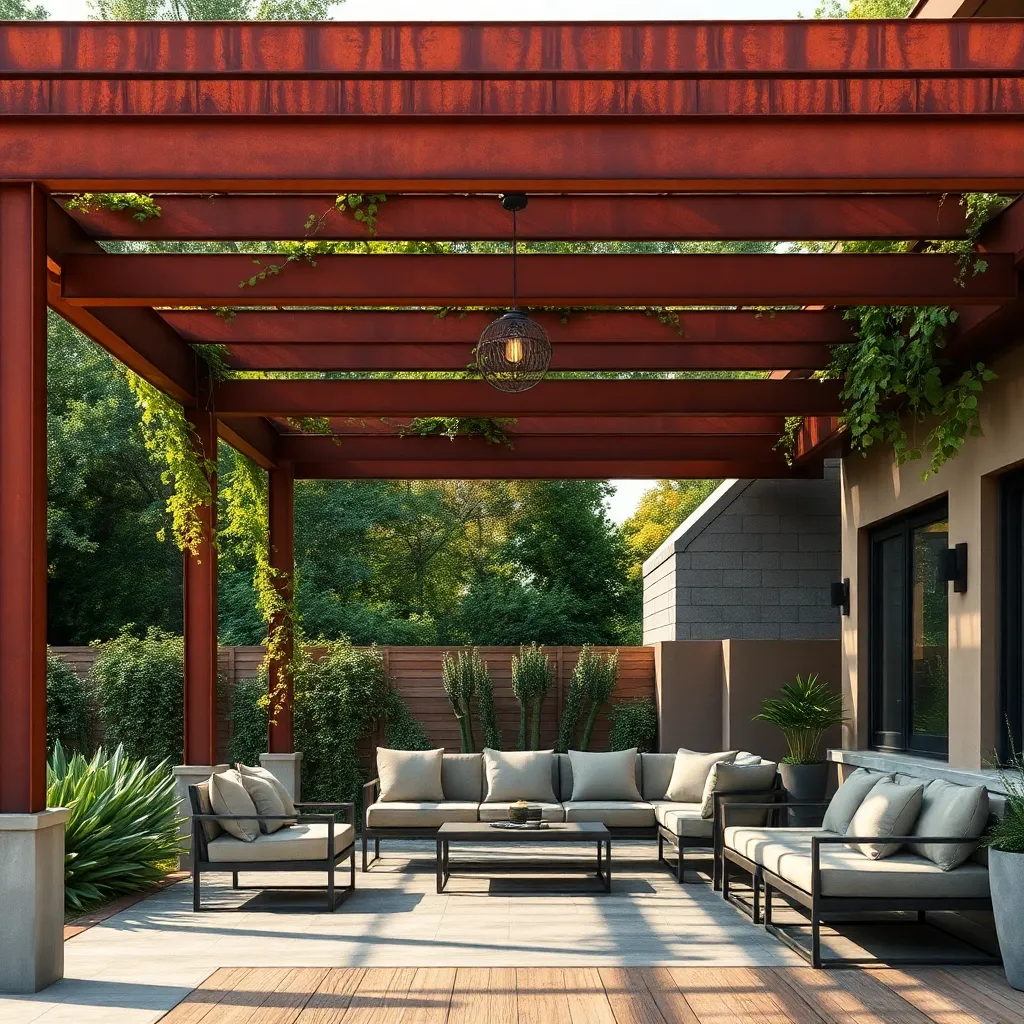
Infuse an industrial chic vibe into your outdoor space with a pergola crafted from Corten steel. This material is renowned for its durability and unique weathered appearance, which develops over time to create a rich, rust-like patina that protects the steel beneath. To achieve the best results, ensure proper drainage during installation to prevent water pooling, which can accelerate corrosion beyond the desired patina. Beginners can start with a simple rectangular frame, but incorporating angled beams can add a dynamic, architectural flair for those ready to take on a more advanced project.
When designing your Corten steel pergola, consider pairing it with elements like concrete or wood for a balanced look. Opt for a minimalist approach by keeping the structure open and airy, allowing climbing plants like wisteria or grapevines to add natural shade and texture over time. Advanced gardeners might integrate built-in planters into the structure for a seamless blend of greenery and industrial elements. Additionally, to enhance usability, incorporate features such as integrated LED lighting or a retractable canopy to adapt the space for various weather conditions and times of day.
Eco-Friendly Green Pergola (Recycled Composite Materials)
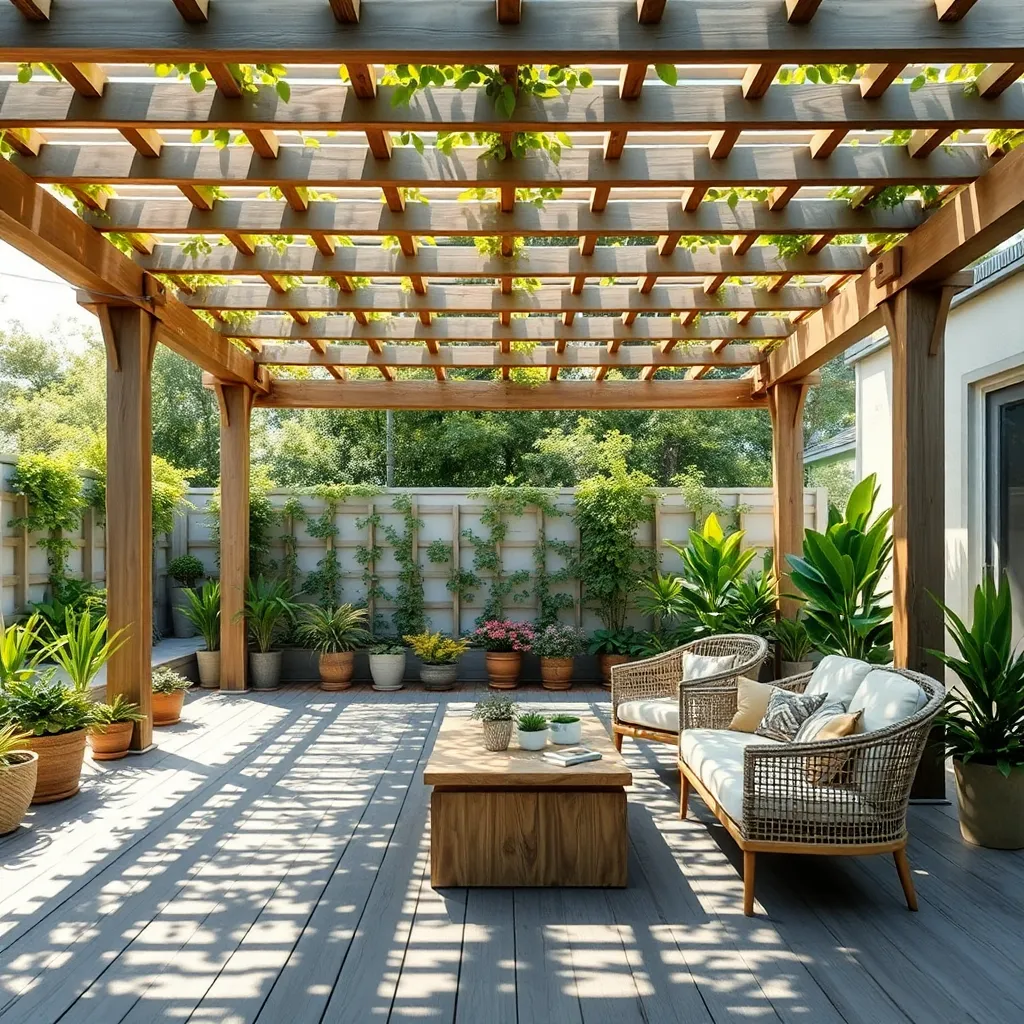
Choosing a green pergola made from recycled composite materials is an excellent way to create an eco-friendly outdoor space that marries durability with sustainability. These materials are typically a blend of recycled wood fibers and plastic, offering a sturdy yet low-maintenance option that withstands harsh weather conditions. Opt for a design that incorporates climbing plants like wisteria or jasmine, which not only enhances the pergola’s aesthetic appeal but also provides natural shade and improves air quality.
For a seamless installation, consider using pre-fabricated kits that come with easy-to-follow instructions, making it accessible even for beginners. When planning your pergola, ensure the structure is appropriately sized—at least 8 feet tall and 10 feet wide—to accommodate both functional uses and decorative elements. Advanced gardeners might integrate solar-powered lights or rainwater collection systems, adding both functionality and sustainability. To further promote an eco-friendly space, use non-toxic sealants and finishes to protect the composite materials while keeping environmental impact minimal.
Traditional Vinyl Pergola (Weather-Resistant PVC)
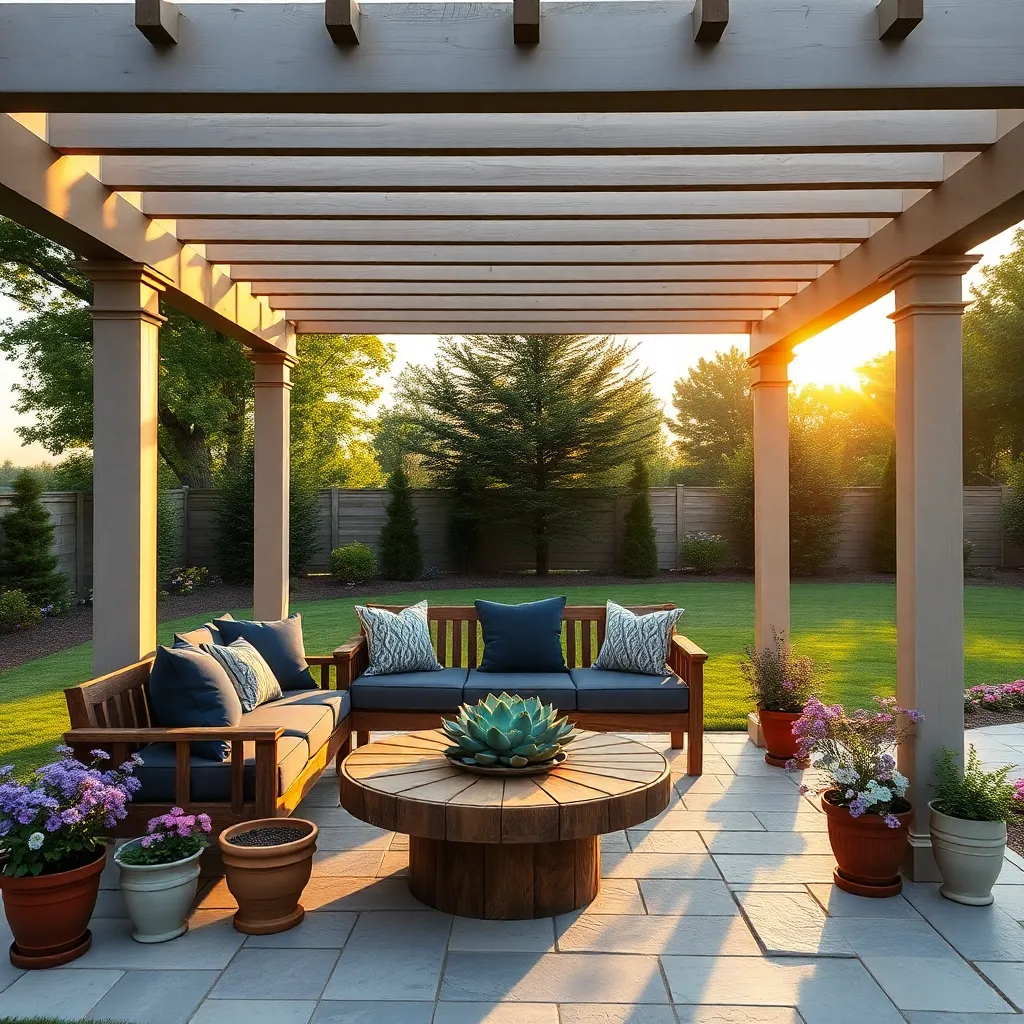
For homeowners seeking a stylish yet low-maintenance pergola, a Traditional Vinyl Pergola made from weather-resistant PVC is an excellent choice. This material is renowned for its durability and ability to withstand various weather conditions, making it perfect for all climates. Beginners will appreciate its ease of assembly, often available in kit form that includes pre-cut components for straightforward installation. For a more advanced touch, consider adding decorative end caps or latticework to enhance the pergola’s aesthetic appeal.
Integrating a vinyl pergola into your outdoor space not only offers shade and comfort but also enhances your garden’s visual appeal. When designing, ensure your pergola is proportionate to your space—typically, a height of 8 to 12 feet and a width of 10 to 16 feet works well for most backyards. For those looking to personalize their structure, explore options like adding climbing plants such as wisteria or clematis, which can beautifully intertwine with the framework, offering a natural canopy over time. With minimal upkeep required, vinyl pergolas allow homeowners to enjoy a blend of beauty and practicality without the hassle of constant maintenance.
Artisan Stone Pergola (Natural Stone Pillars)

Embrace timeless elegance with an artisan stone pergola, which features natural stone pillars that are both durable and stunning. Natural stone, such as granite or limestone, offers unmatched resilience against the elements, making it an ideal choice for a long-lasting outdoor structure. For beginners, consider starting with a simple rectangular design to keep construction straightforward. Ensure the stone pillars are properly sealed to prevent moisture penetration, preserving their beauty for years to come. This type of pergola not only adds architectural interest but also increases the value of your home.
For those looking to elevate their design, incorporating climbing plants like wisteria or ivy can enhance the natural aesthetic while providing additional shade. Advanced builders might explore custom stonework by integrating detailed carvings or unique stone shapes for a personalized touch. When planning your pergola, measure carefully to maintain proportion with your outdoor space—typical dimensions range from 12×12 feet to larger, more expansive designs.
- Ensure your foundation is robust to support the weight of the stone.
- Consider hiring a professional mason for more intricate designs.
With the right approach, a stone pergola becomes a captivating focal point that seamlessly blends with the natural surroundings.
Hybrid Solar Pergola (Integrated Solar Panels)
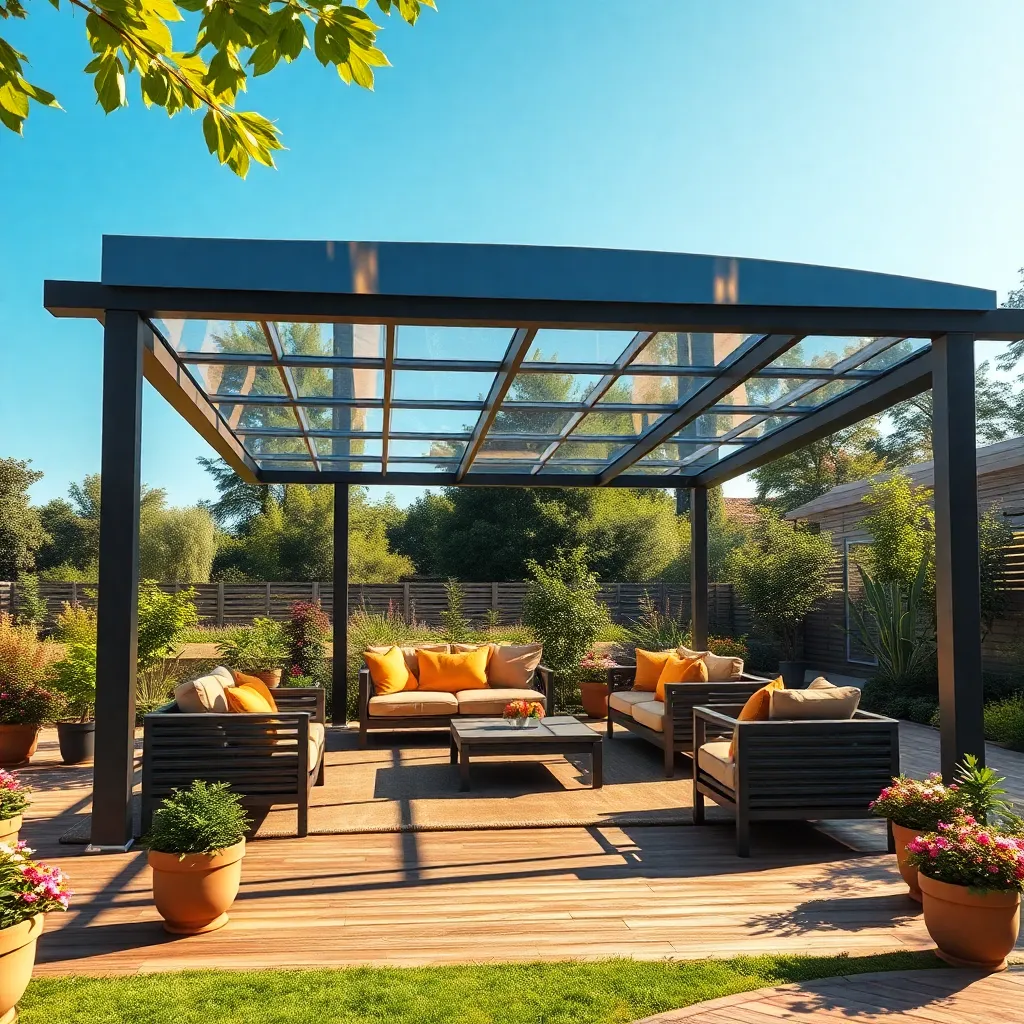
Integrating solar panels into your pergola design is a smart way to combine style with sustainability. A hybrid solar pergola not only provides a shaded retreat but also generates clean energy, reducing your home’s electricity costs. For beginners, consider starting with a basic framework using durable materials like aluminum or steel to support the weight of solar panels. Ensure that the structure’s orientation maximizes sun exposure, typically facing south if possible, to optimize energy capture.
Advanced builders can explore using bi-facial solar panels, which capture sunlight from both sides, enhancing energy efficiency. When designing your pergola, think about incorporating adjustable louvers or retractable canopies for versatile sun control. For optimal results, consult with a solar installation professional to integrate the panels seamlessly with your existing power system. This approach not only boosts your home’s eco-friendliness but also adds a modern, tech-forward element to your outdoor space.
Conclusion: Creating Beautiful Outdoor Spaces
In exploring the ’10 Best Pergola Materials for Durability and Style,’ we delved into key relationship concepts such as understanding the foundational strength of trust (like classic wood), valuing the resilience of effective communication (akin to robust aluminum), and appreciating the allure of shared experiences (much like the elegance of glass). We also covered adaptability (as seen in versatile steel), nurturing growth (similar to living pergolas), and prioritizing individuality within a partnership (like customizable vinyl). Our journey further highlighted the importance of sustainability (bamboo), the balance of tradition and innovation (fiberglass), the significance of enduring support (wrought iron), and the beauty of shared goals (composite materials).
To strengthen your relationship, choose one concept to focus on this week and implement a small, meaningful change. Perhaps initiate a heartfelt conversation or plan a shared activity that encourages connection.
As you embark on this journey of relationship enrichment, bookmark this article as your go-to guide for sustaining and enhancing your partnership. Remember, every step taken today is a foundation for a harmonious future. Embrace these insights with warmth and enthusiasm, knowing that your efforts will lead to lasting relationship success.

